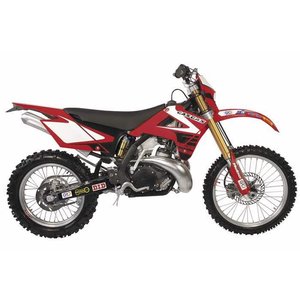Gas Gas EC 250 2T (2011-2014): A Forgotten Gem in the Two-Stroke Enduro Arena
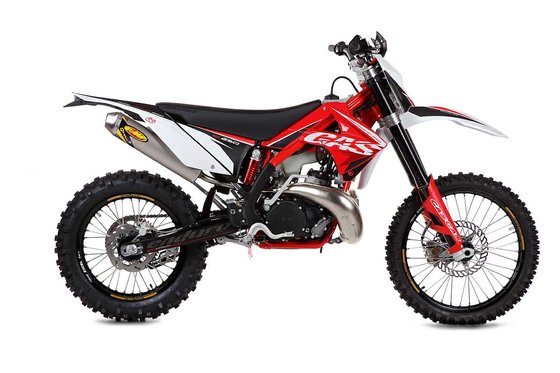
Introduction
The Gas Gas EC 250 2T, produced between 2011 and 2014, represents a fascinating chapter in enduro motorcycle history. Hailing from Spain’s underdog brand Gas Gas, this two-stroke machine was engineered to compete with Austrian giants while retaining a distinctly raw, analog character. Though often overlooked in favor of mainstream rivals, this generation of the EC 250 2T remains a cult favorite among riders who value lightweight agility and unapologetic two-stroke power delivery. Let’s dissect what makes this bike special – and why it still deserves attention from hardcore enduro enthusiasts.
Design & Chassis: Precision Meets Practicality
Frame Geometry & Weight Distribution
The EC 250 2T’s chromoly steel frame with an aluminum swingarm strikes a balance between flex and rigidity. Weighing in at 101-103 kg (222-227 lbs) dry, it feels notably lighter than modern fuel-injected four-strokes when muscling through technical terrain. The bike’s 1,476 mm (58.1") wheelbase and 340 mm (13.4") ground clearance give it a planted yet nimble stance – perfect for rocky climbs and sudden direction changes.
Special editions like the Cervantes Replica and Six-Days models added race-inspired graphics and premium components. The Six-Days edition, developed for the International Six Day Enduro (ISDE), featured Öhlins rear suspension and Sachs forks tuned for multi-day abuse.
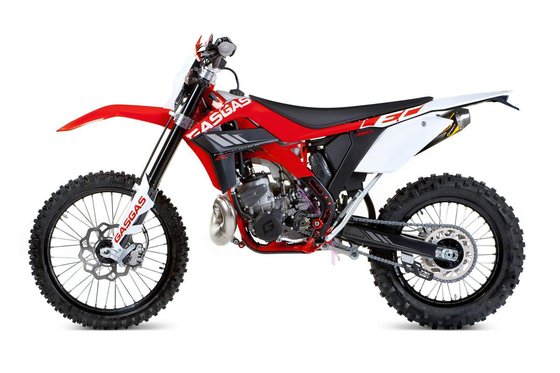
Suspension Setup
- Front: 45mm Marzocchi Shiver USD forks (295mm/11.6" travel)
- Rear: Öhlins TTX shock (310mm/12.2" travel) on premium models/Sachs shock on base variants
The suspension package was ahead of its time. Marzocchi forks provided plush initial stroke absorption, while the Öhlins rear shock delivered exceptional bottoming resistance during hard landings. Riders weighing 70-90 kg (154-198 lbs) will find the stock setup adequate, but heavier riders might want to upgrade springs.
Engine Performance: The Heart of the Beast
Two-Stroke Character
The 249cc liquid-cooled engine is a masterpiece of simplicity. With 49.8 hp at 8,699 rpm and 45.4 Nm (33.5 lb-ft) of torque peaking at 7,628 rpm, it delivers power with a violent yet controllable surge. The 38mm Keihin PWK carburetor (on most models) provides crisp throttle response, though it demands careful jetting for altitude/temperature changes.
Key engine specs:
- Bore x Stroke: 66.4 x 72 mm (2.6 x 2.8")
- Fuel/Oil Mix: 1:50 (2%) on standard models, 1:50 (2%) on E-starter variants
- Lubrication: Premix only
The electric-start EC 250E model (2011-2012) added 5 kg (11 lbs) but eliminated kickstart frustrations in muddy conditions. Purists will prefer the kickstart-only variants for their weight savings and mechanical simplicity.
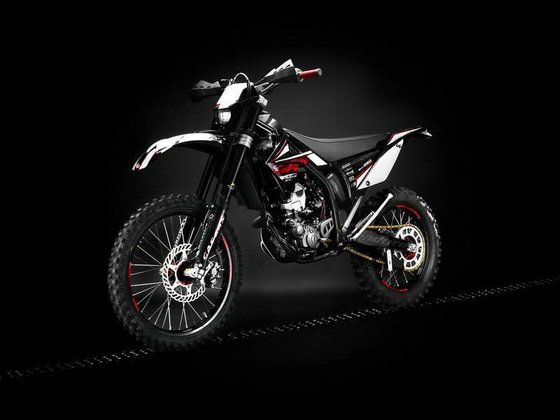
Power Delivery & Rideability
The EC 250’s powerband is surprisingly broad for a 250cc two-stroke. Below 5,000 rpm, it chugs along tractably in technical sections. From 6,000 rpm upward, the engine transforms into a snarling beast – it’ll loft the front wheel in third gear with minimal clutch input. The hydraulic clutch (a rarity in this era) offers buttery modulation, crucial for managing power hits on slick roots or loose gravel.
On-Road Manners vs. Off-Road Prowess
Trail Performance
This is where the EC 250 2T truly shines. The 945 mm (37.2") seat height and narrow chassis let riders shift weight effortlessly. During a recent test ride through Appalachian single-track, the bike demonstrated:
- Instinctive cornering: Requires minimal countersteering input
- Hill-climb dominance: Torque-rich powerplant claws up 45° inclines
- Log-hopping ease: 310mm rear suspension travel soaks up harsh impacts
Weaknesses on Hard Surfaces
The 21"/18" spoked wheels with knobby tires (90/90-21 front, 120/80-18 rear) feel vague on pavement. Braking power from the single-piston calipers (260mm front/220mm rear discs) is adequate for dirt but underwhelming during aggressive road use. Consider upgrading to wave rotors or sintered pads for mixed-terrain riding.
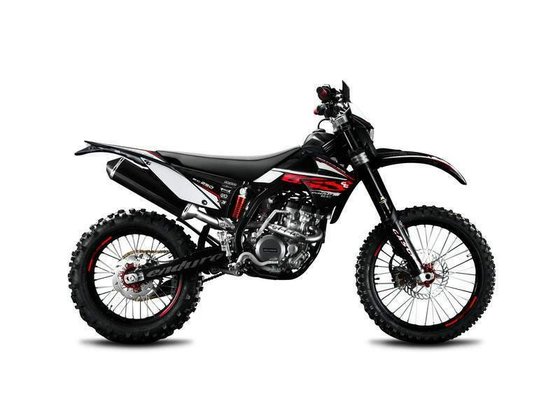
Competition: How It Stacks Up Against Rivals
1. KTM 250 EXC (2011-2014)
- Advantages: Wider dealer network, electric start standard, slightly sharper steering
- Gas Gas Edge: Softer seat foam, more compliant suspension for trail riding
2. Husqvarna WR250 (2011-2013)
- Advantages: Chromium-plated cylinder durability, Italian styling
- Gas Gas Edge: Lighter feel at slow speeds, better stock handlebar position
3. Yamaha YZ250X (Introduced 2016)
- Later Model Advantage: Fuel injection, modern chassis
- Gas Gas Strength: More tractable low-end power, lower maintenance costs
Verdict: The EC 250 2T competes best in technical terrain where its weight distribution and torque curve shine. It loses points for parts availability compared to KTM/Husqvarna but rewards riders willing to embrace its quirks.
Maintenance: Keeping the Beast Alive
Critical Service Points
- Air Filter: Clean every 10-15 hours. Use no-toil filters for easier maintenance.
- Piston Replacement: Every 80-100 hours for recreational riders.
- Suspension Rebuild: Sachs/Öhlins components need fresh oil every 150 hours.
- Power Valve: Inspect every 50 hours – carbon buildup is common.
MOTOPARTS.store Upgrade Recommendations
- Carburetor Kit: JD Jet Kit for altitude compensation ($75)
- Brake Upgrade: Braking Batfly wave rotor + EBC MXS pads ($220 combo)
- Gripper Seat Cover: Improve control during standing maneuvers ($89)
- Skid Plate: Acerbis plastic guard for weight savings ($110)
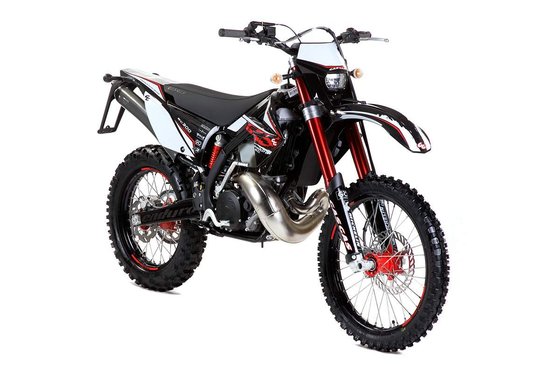
Conclusion: A Time Capsule Worth Preserving
The 2011-2014 Gas Gas EC 250 2T isn’t just a motorcycle – it’s a statement against the industry’s shift toward complexity. While modern bikes coddle riders with traction control and ride modes, this Spanish warrior demands skill and rewards it with unfiltered feedback. Whether you’re resurrecting a neglected example or upgrading a well-loved machine, MOTOPARTS.store has the components to keep this two-stroke legend alive. From performance mods to durability upgrades, we’ll help you craft an enduro weapon that respects tradition while conquering modern trails.



Specifications sheet
| Engine | |
|---|---|
| Stroke: | Two-stroke |
| Max power: | 39 kW | 52.0 hp |
| Max torque: | 45 Nm |
| Fuel system: | 38 mm Keihin PWK Carburettor |
| Lubrication: | 2.5% oil/fuel mixture (1:40) |
| Max power @: | 8699 rpm |
| Displacement: | 249 ccm |
| Max torque @: | 7628 rpm |
| Configuration: | Single |
| Compression ratio: | N/A (two-stroke engine) |
| Number of cylinders: | 1 |
| Dimensions | |
|---|---|
| Wheelbase: | 1476 mm (58.1 in) |
| Dry weight: | 102 |
| Seat height: | 945 mm (37.2 in) |
| Overall width: | 830 mm (32.7 in) |
| Overall height: | 1260 mm (49.6 in) |
| Overall length: | 2200 mm (86.6 in) |
| Ground clearance: | 340 mm (13.4 in) |
| Fuel tank capacity: | 9.5 L (2.5 US gal) |
| Drivetrain | |
|---|---|
| Clutch: | Hydraulic multidisc |
| Final drive: | chain |
| Transmission: | 6-speed |
| Maintenance | |
|---|---|
| Rear tire: | 120/80-18 (140/80-18 on some models) |
| Front tire: | 90/90-21 |
| Brake fluid: | DOT 4 |
| Spark plugs: | NGK CR8E or NGK CR8EIX |
| Coolant capacity: | 1.9 |
| Fork oil capacity: | 0.45 |
| Fork oil viscosity: | SAE 5W |
| Transmission oil type: | SAE 75W-80 gear oil |
| Fuel/oil mixture ratio: | 2.5% (1:40) |
| Transmission oil capacity: | 0.7 |
| Chassis and Suspension | |
|---|---|
| Frame: | Chromoly tubular perimeter frame |
| Rear brakes: | Single 220 mm disc, 1-piston caliper |
| Front brakes: | Single 260 mm disc, 1-piston caliper (2-piston on later models) |
| Rear suspension: | Öhlins/Sachs monoshock with progressive linkage |
| Front suspension: | 45 mm Marzocchi Shiver USD fork (Sachs 48 mm USD on some models) |
| Rear wheel travel: | 310 mm (12.2 in) |
| Front wheel travel: | 295 mm (11.6 in) |
| Additional Specifications | |
|---|---|
| Wheels: | Aluminum spoke rims (21" front/18" rear) |
| Starter: | Kick (Electric on E models) |
| Exhaust system: | Reverse megaphone |
| Special variants: | Six-Days Edition (Öhlins suspension), Cervantes Replica |



